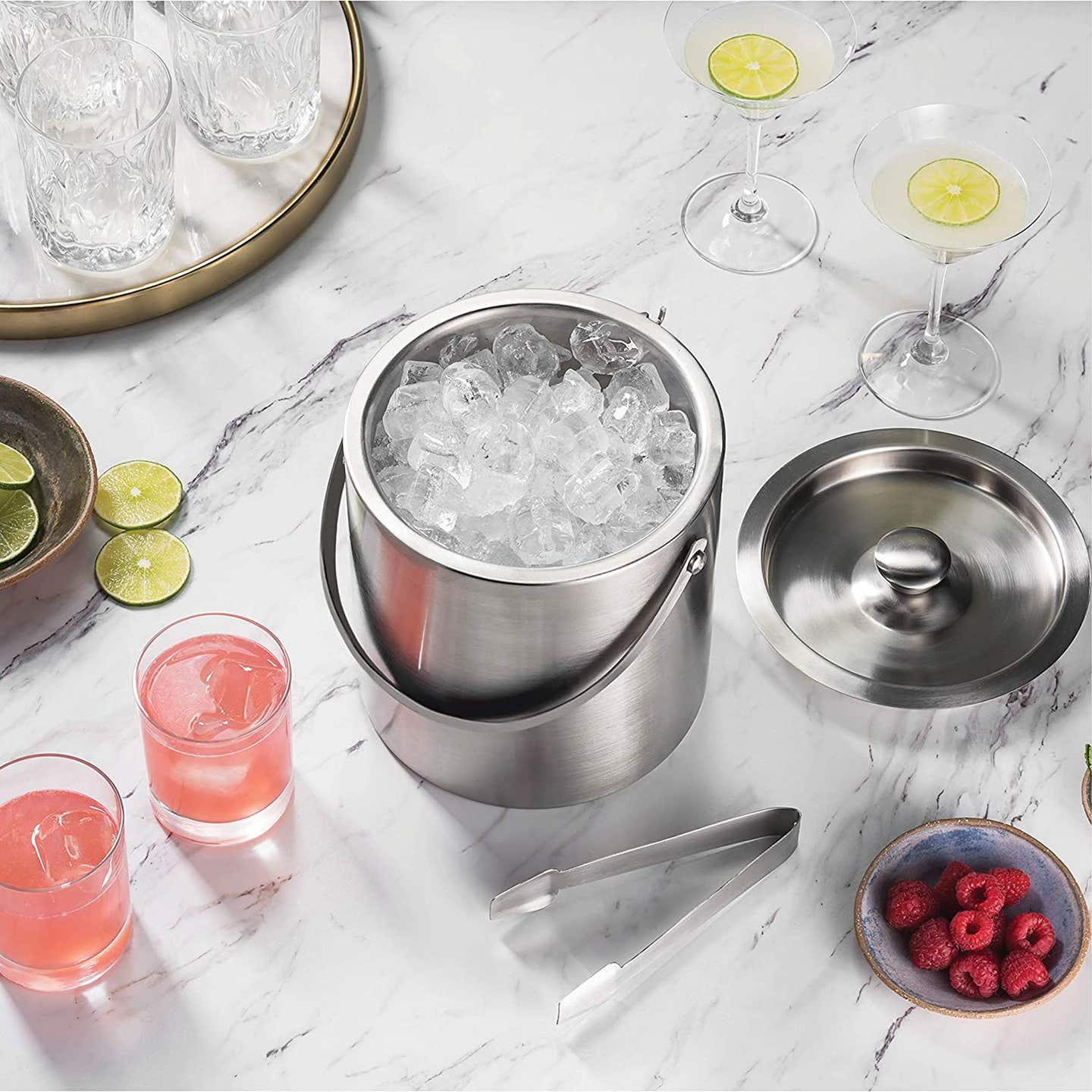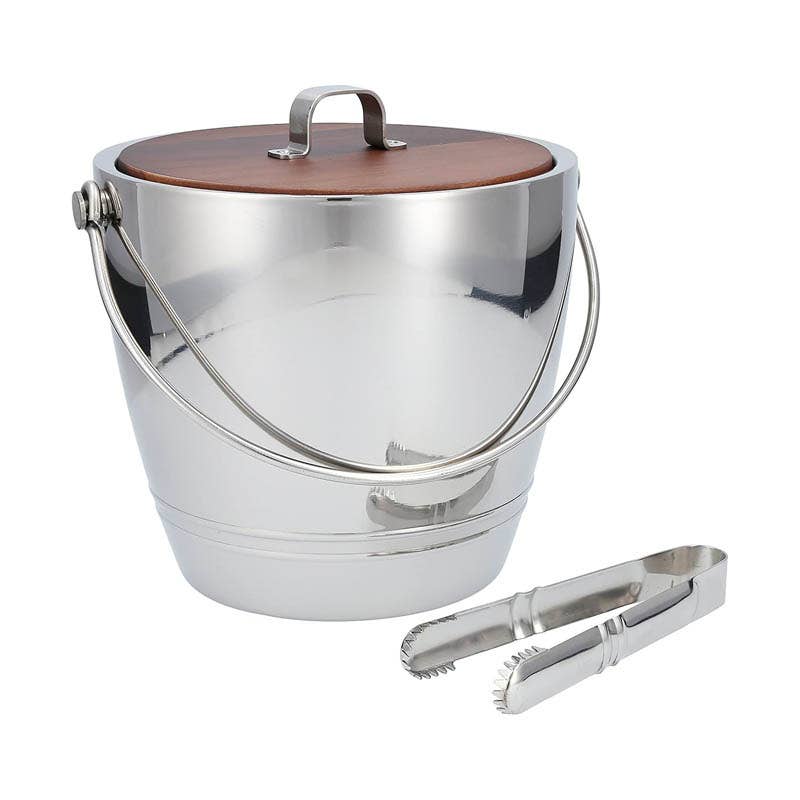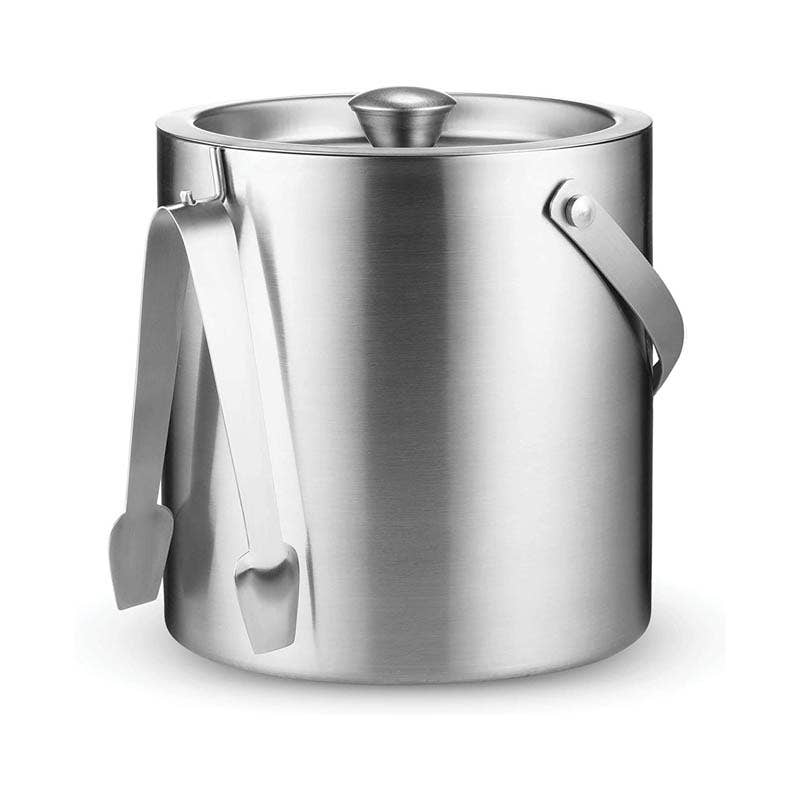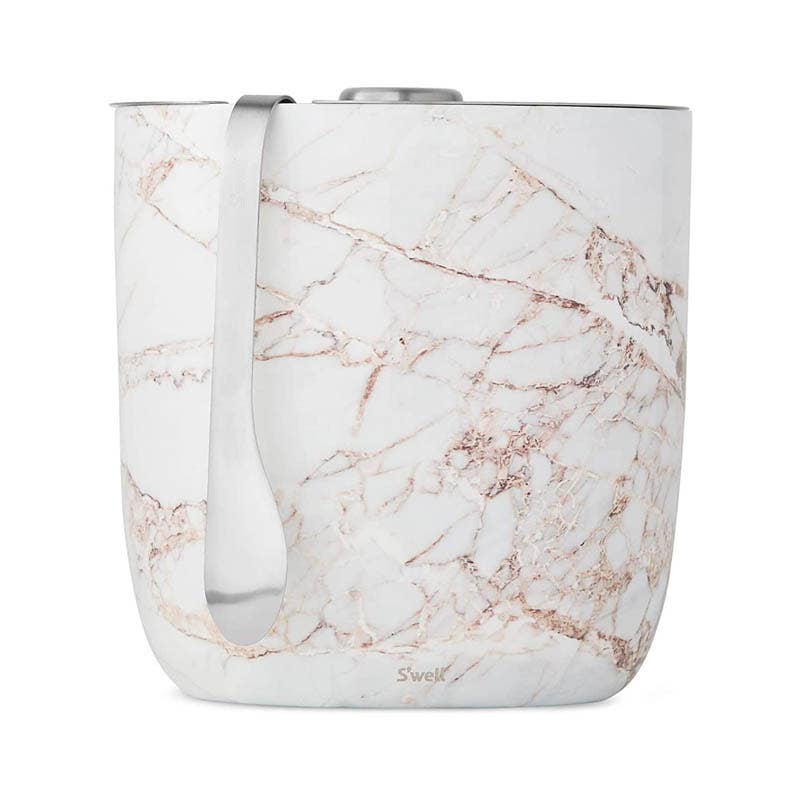
You might not technically need an ice bucket for everyday dining but if your plans involve entertaining and long-overdue catch-ups with friends and family, it’s a classic purchase that you’ll put to good use. “An ice bucket is one of, if not the most, underrated pieces on a home bar,” says Matt Landes, founder of Cocktail Academy, an L.A.-based experiential catering company.
Besides elevating your cart or table setting, it’s also a good addition to stash in your picnic basket for special events, especially if you drink white wine or rose which should be served chilled (specifically, between 40 to 60 degrees Fahrenheit). “A tried and true cooler will always be great, but you can also bring a beautiful ice bucket to serve directly out of if you want to present things in a nice way,” suggests Jessica Manchenton, head bartender at NYC restaurant and bar Queensyard. Ahead, our picks for the best ice bucket, no matter your needs or summer plans.
- Best Overall: Crafthouse by Fortessa Stainless Steel Ice Bucket with Tongs
- Best Value: FineDine Double Wall Ice Bucket
- Best Insulated: S’well Ice Bucket and Tongs
Features to Keep in Mind
Material: Stainless steel and glass hold temperature better than acrylic says Manchenton, who isn’t a fan. “As a personal preference, I think plastic looks cheaper, and it also doesn't insulate ice well, so you end up with a bucket of cold water,” she explains.
Size: “Think about how much ice any drink you’re making will require—both for mixing and serving—and the total guests you’re anticipating,” says Landes. Ideally, a well-portioned bucket holds enough for each guest to have one drink before you need to refill it. Or, follow Manchenton’s rule of thumb: “Anything from 12-by-12-inch to 6-by-6-inch will work well.”
Accessories: Some, but not all, buckets do come with a set of tongs or scoop; if not, it’s a necessary addition. “No one wants to be fumbling around with their hands or trying to scoop ice out with a glass!” says Manchenton. Again, metal is best, as it won’t melt the cubes.
Our Top Picks
Best Overall
This sleek Art Deco-inspired stainless steel bucket was designed by world champion bartender and acclaimed mixologist Charles Joly and is packed with practical yet beautiful details. There’s a draining grate to prevent meltwater from collecting (which is a crucial feature, according to Manchenton) and it comes complete with a handsome walnut lid, carrying handle for portability, and matching tongs. Joly’s barware collection spans cocktail shakers, a walnut wood muddler, and even a glass smoking box, making it the perfect set if you’re stocking a bar from scratch or want to recreate your go-to speakeasy’s signature drink.
Best Value: FineDine Double Wall Ice Bucket
Best Value
It’s hard to beat FineDine’s price point, especially because it comes with multiple accessories that many buckets don’t: tongs (with a handy built-in hook to hold them), an airtight lid, and an internal strainer. The double-insulated design is crucial “to keep the ice cold and avoid condensation on the outside of the bucket,” Manchenton says.
Best Insulated: S’well Ice Bucket and Tongs
Best Insulated
If you swear by S’well’s popular water bottles, good news: the brand makes a triple-layer ice bucket with the same clever vacuum insulated technology. Unlike glass or plastic, it isn’t sensitive to heat and the compact design (holding up to two pounds of ice) makes it ideal for outdoor adventures.
Ask the Experts
How long will ice last in an ice bucket?
“It depends on your surroundings and how you use it,” Manchenton says, so factor in elements like humidity, heat, and direct sunlight. Covered designs will help ice last longer but sans lid, expect ice to start melting within two hours; “It won't be ideal for usage after four hours,” Manchenton says.
Should you add water to an ice bucket?
Adding water will assist in cooling drinks faster, and keeping them chilled, Manchenton says, because it ensures your beverages “sit further into the ice and increases the surface area of what's being cooled.”
Why do you put salt in an ice bucket?
Salt can be added to an ice bucket to cool a drink down quickly because it changes a liquid’s melting and freezing points. “Adding salt lowers the temperature at which water freezes so that meltwater has to reach a lower temperature than 32 degrees before turning into ice,” says Manchenton. “This process creates a cold icy solution that will help bring down the temperature faster.”
Keep Reading
Continue to Next Story













